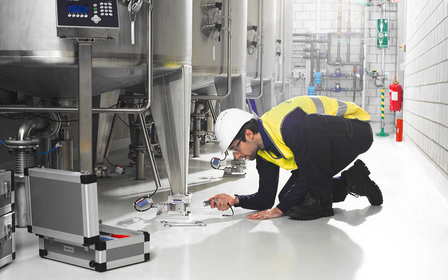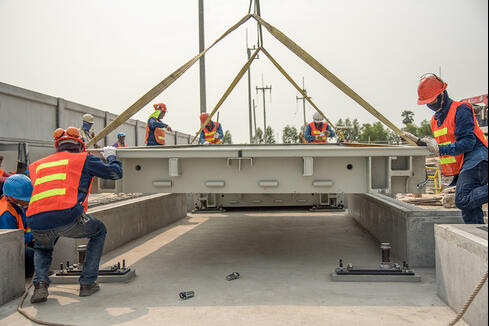Load Cell Installation Tips
August 30, 2019

The process of installing a load cell or multiple load cell system varies greatly depending on the load cells, loading axis, application, environment, whether you are using a tension load cell or compression load cell, and many other factors. There are, however, some universal practices that greatly reduce the risk of equipment damage and mechanical error during your load cell installation.
Installing a Load Cell
Each load cell and application is different. It is important to treat each load cell removal and install as a separate install from other load cells you might have worked with. Please review our load cell installation tips and recommendations on how to mount a load cell and install it.
1) Always refer to the load cell datasheet to ensure the correct wiring color code is used.
2) Load cells must be placed on rigid, stable, structures. Mounting assemblies must compensate for misalignment of support surfaces.
3) For multi-load cell systems, all load cells must be on the same horizontal plane. Use proper mounting assemblies for height compensation.
4) Mounting and loading surfaces should be clean and free from dirt and debris.
5) Loading surface must be perpendicular to the loading axis to avoid side, bending, or torsion forces.
6) Avoid dropping or sudden impact when installing load cells. Related damage can result in a loss of accuracy.
7) Do not cut or lengthen the load cell cable. Load cell calibration is based on the length of the cable at the time of calibration.
8) When available, always use proper mounts and assemblies with overload limiters and stops.
9) Load cells and systems must be protected against tipping and shifting related to vibrations, windy conditions, seismic conditions, and stability of the support structure.
10) Each load cell, and the system as a whole must be properly grounded.

11) Avoid welding with load cells already installed. If this is unavoidable, place the welder ground clamp close to the required welding point to prevent sending current through the load cell body.
12) Load cells must be protected from excessive moisture. Use waterproof sheaths and joints to protect cables from corrosion. (This does not apply to specialized submersible and water-resistant systems.)
13) Protect all system components from dust, dirt, and debris.
14) Minimize temperature fluctuations. Make sure that load cells are operating within the compensated temperature range specified on the datasheet.
Does a load cell always require a mount?
Load Cells do not require mounts, but they do require being mounted and loaded properly. There are many considerations like using a level surface, loading each load cell correctly, and allow you to focus on getting your new system up and running.
